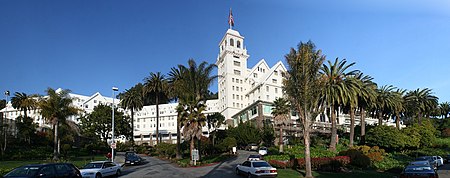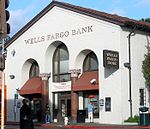Claremont Hotel & Spa

Claremont Club & Spa, A Fairmont Hotel is a historic hotel situated at the foot of Claremont Canyon in the Berkeley Hills and located in the Claremont district which straddles the city limits of Berkeley and Oakland. At its elevation (400 feet), the location provides scenic views of San Francisco Bay. The hotel building is entirely in Oakland, as are the spa, the gardens and parking area. However, two small portions of the property, one just east of the Berkeley Tennis Club and the other near the intersection of Claremont Avenue and Russell Street, are within the city limits of Berkeley, and the resort has a Berkeley mailing address (41 Tunnel Road, Berkeley CA 94705).The Berkeley Tennis Club leased a portion of the hotel grounds from 1917 to 1945. In 1945, the Club purchased this section of the grounds, and remains located at 1 Tunnel Road, Berkeley next to the hotel. The club's property straddles the Oakland-Berkeley city limits, which run down the former Key System E-train right of way that now serves as a pathway between the sets of courts. The Claremont has 279 guest rooms, a 20,000-square-foot (1,900 m2) spa, 10 tennis courts, and 22 acres (8.9 ha) of landscaped gardens. Romantic stories tell that it was once won in a checkers game. The hotel was nominated and deemed eligible for listing on the National Register of Historic Places in 2003, but was not listed due to owner objection. It is a designated Oakland City Historical Landmark.
Excerpt from the Wikipedia article Claremont Hotel & Spa (License: CC BY-SA 3.0, Authors, Images).Claremont Hotel & Spa
Claremont Avenue, Oakland
Geographical coordinates (GPS) Address Website External links Nearby Places Show on map
Geographical coordinates (GPS)
| Latitude | Longitude |
|---|---|
| N 37.8588 ° | E -122.2418 ° |
Address
The Claremont Hotel (Claremont Club & Spa)
Claremont Avenue
94168 Oakland
California, United States
Open on Google Maps







